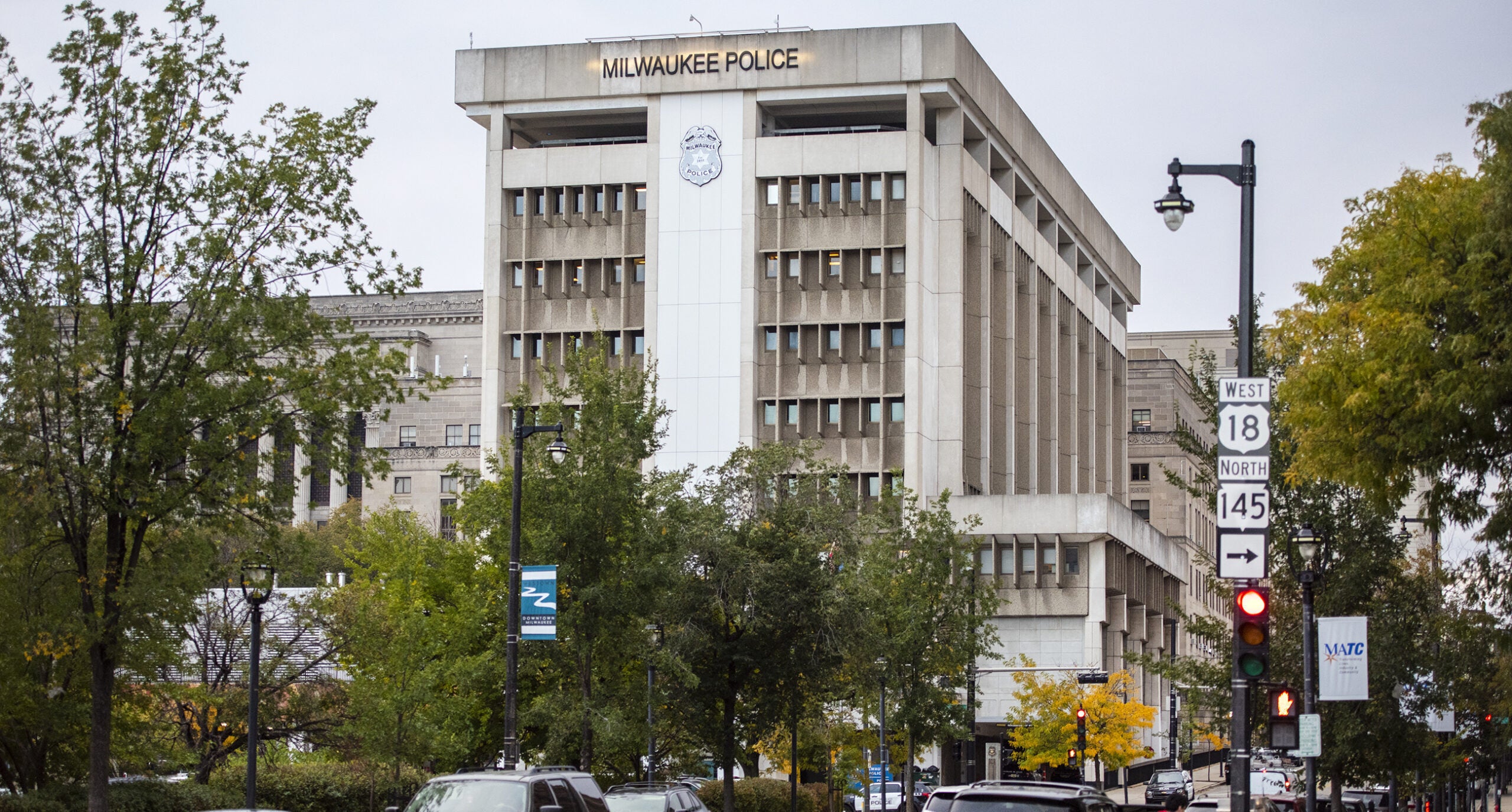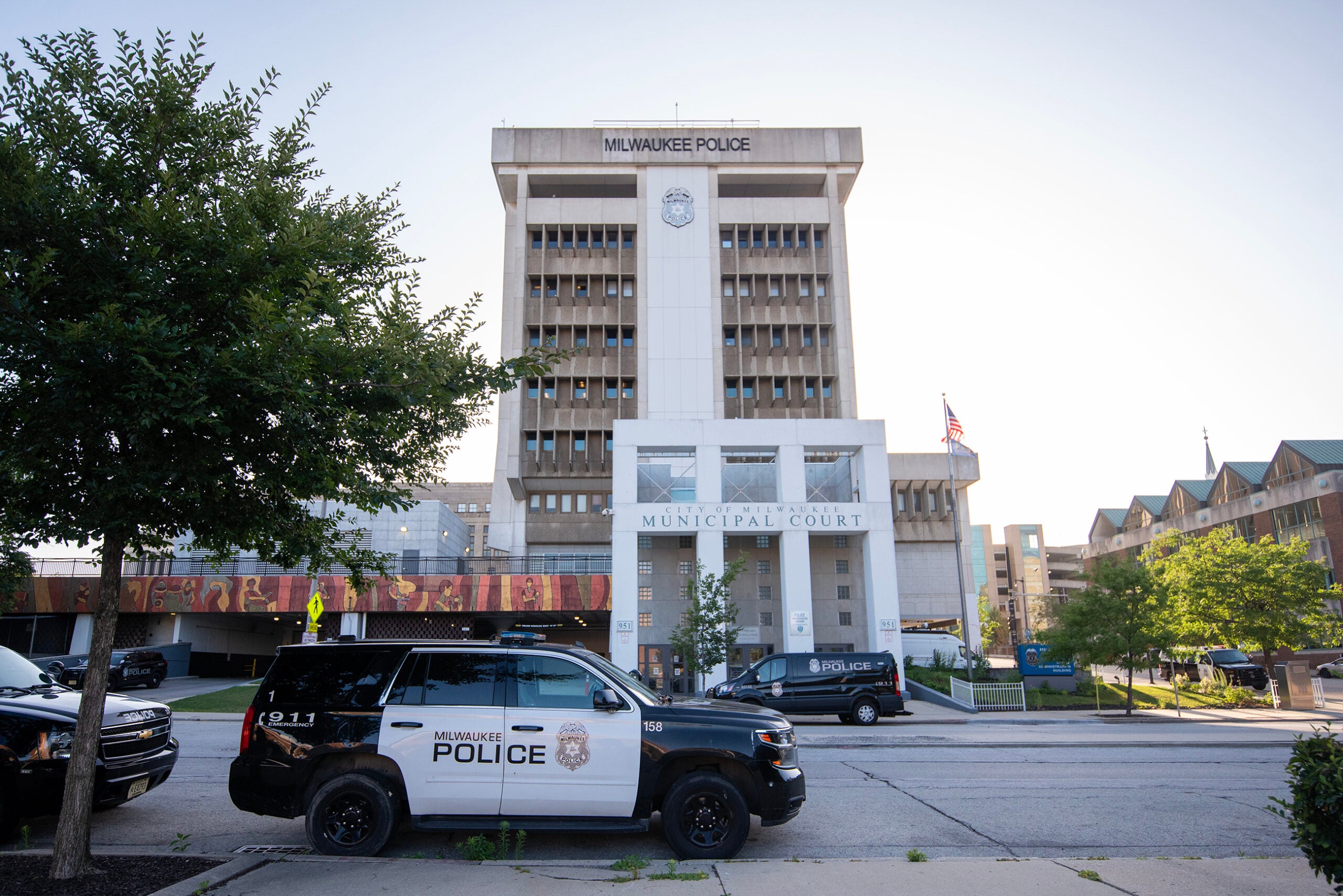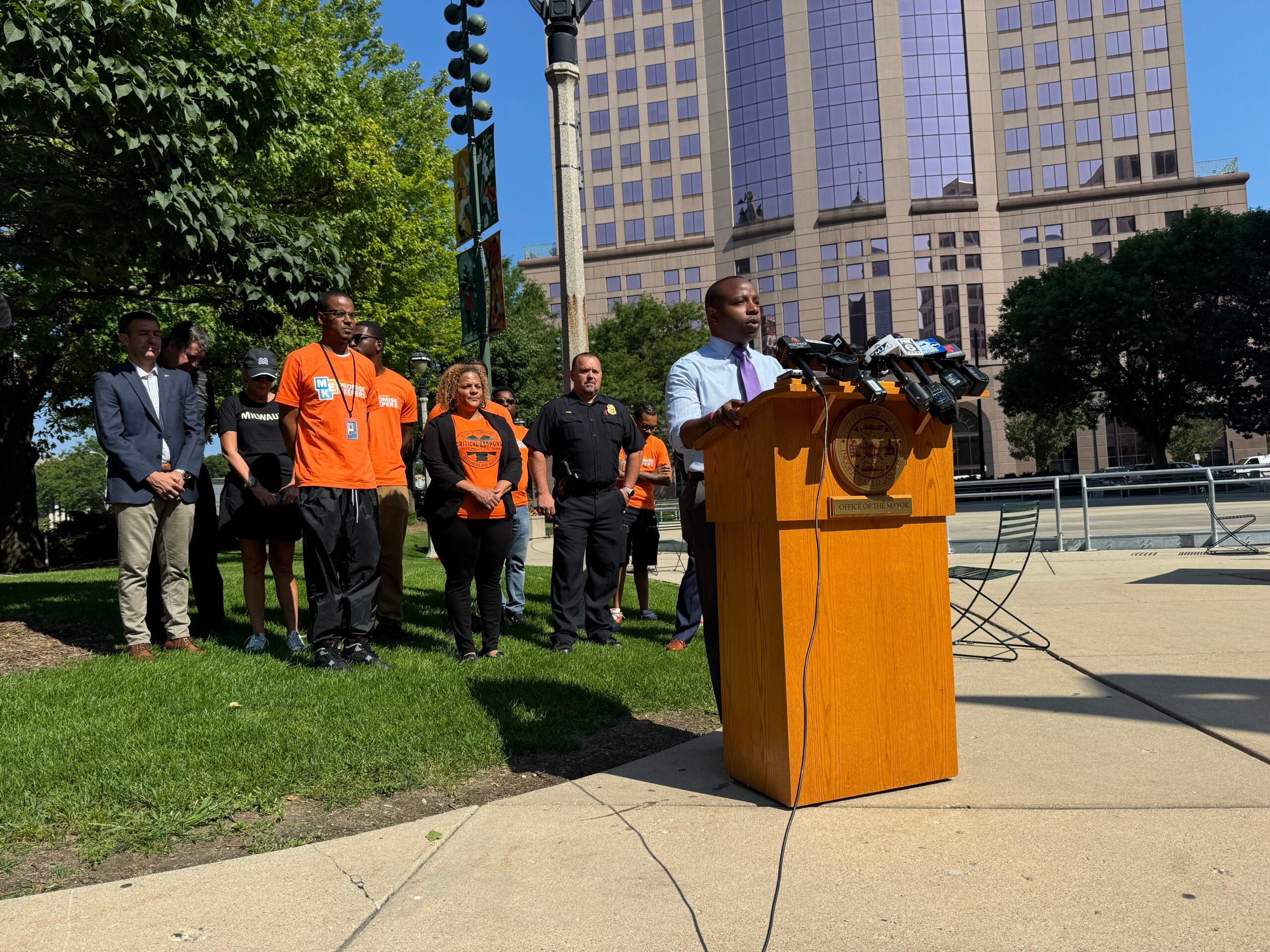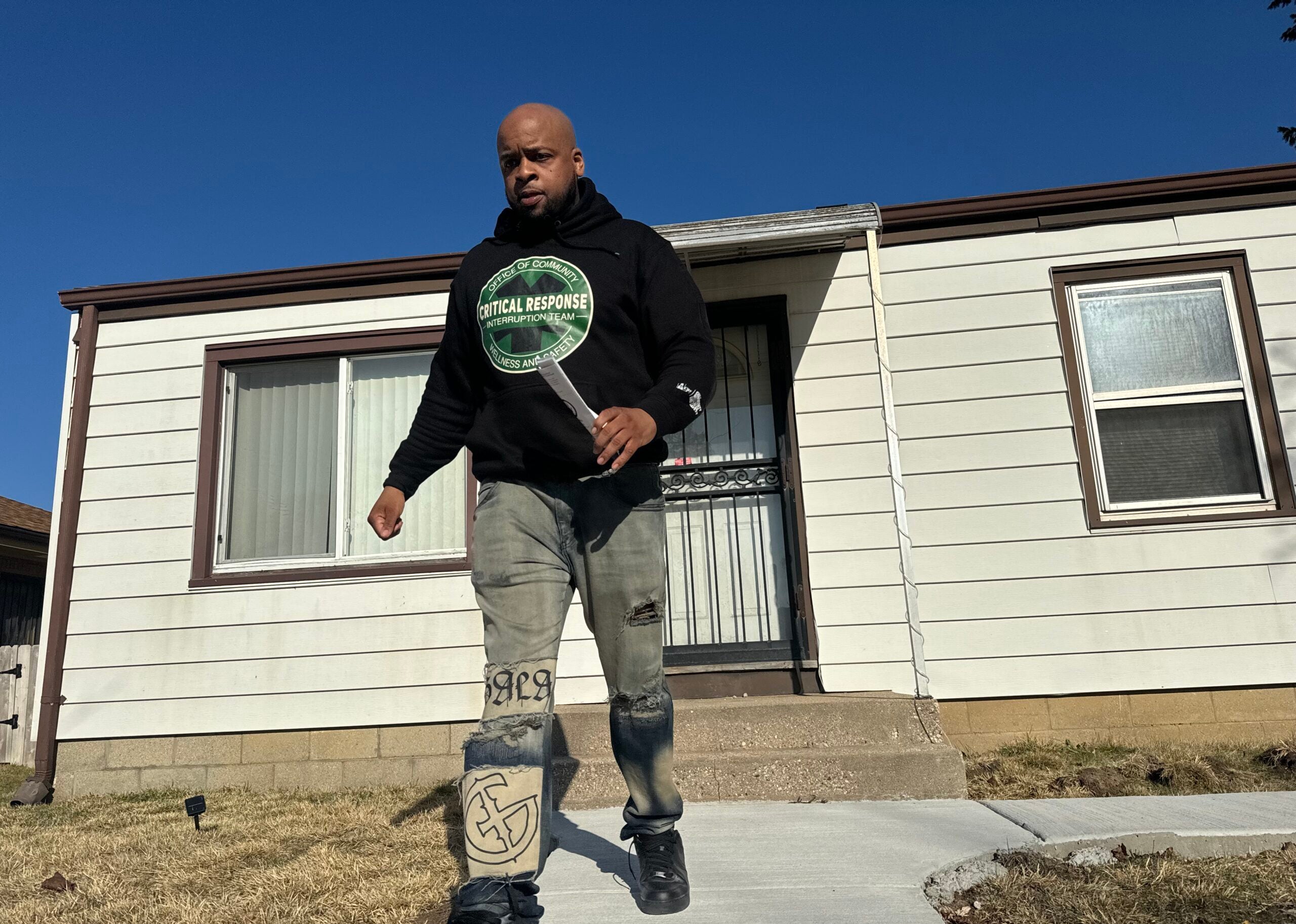Milwaukee leaders hope a trend showing a decline in homicides over the first six months of the year will continue with the help of violence prevention groups and efforts to build trust between police and the community.
The state’s largest city set its third straight homicide record last year, as 214 people died by homicide. Homicides are down 28 percent this year compared to last, according to crime statistics from the Milwaukee Police Department. Nonfatal shootings are also down 4 percent.
Even so, Milwaukee Police Department Assistant Chief Nicole Waldner said officers are seeing more lethal weapons on the streets. She said many guns now used in shootings sound like “machine guns.”
News with a little more humanity
WPR’s “Wisconsin Today” newsletter keeps you connected to the state you love without feeling overwhelmed. No paywall. No agenda. No corporate filter.
“There’s just too many guns,” Waldner said during a Milwaukee Press Club forum Tuesday. “Whether they’re legal, whether they’re not, whether they’re made off of a machine — there’s just too many guns, and we don’t have control, and we put laws in place that didn’t address responsibility.”
A study from the University of Southern California found violent crime increases when the temperature rises in the summer. That’s proven true this year. During the last four weeks, nonfatal shootings have increased by 92 percent compared to the four weeks prior, according to police department data. Homicides have also increased by 200 percent during that same period.
Waldner said she’s happy homicides and shootings are down overall this year, but she knows there’s more work to be done. She also urged residents to keep their guns at home, and for guardians to keep their guns locked away from children.
“I’m appreciative of the numbers going down, but I do not want to get excited until we see a change,” she said.
Ashanti Hamilton is the director of the Milwaukee Office of Violence Prevention. That office has been focused on decreasing violent crime, mainly through a public health approach that focuses on addressing the root causes of crime.
“We can’t celebrate if we’re not having an impact on root causes,” Hamilton said Tuesday.
He believes increasing partnerships with community organizations based on violence prevention is important.
“I think they can work together in order to be able to have an impact in the communities that they’re operating in,” he said.
Hamilton said those organizers and others have been “flooding” areas of high crime in the city.
“The very first step is having a deep presence in those communities,” Hamilton said.
Last month, the city announced its “Safer City MKE” initiative, aimed at keeping kids off the streets during the summer. That public-private partnership includes incentives youth can get for participating in events and programs across the city. The first Milwaukee Peace Week, which included a neighborhood walk, a gun violence summit, a faith-based panel discussion, as well as a resource fair, was also held last month.
414Life is a collaboration of the Office of Violence Prevention, Froedtert Hospital, the Medical College of Wisconsin, Ascension Wisconsin and the nonprofit Uniting Garden Homes Inc. The program focuses on educating the community about the harms of gun violence.
Hamilton said he’s heard from city residents who want to see more of a presence from police in their community, but in a “dignified and respectful way.”
“We want to create a situation where police officers are not being called for every social issue that happens in the community, that there are alternatives, than having a police officer show up to solve those issues,” Hamilton added.
Even as homicides hit a record high for the third year in a row in the city in 2022, other serious crimes — including robbery, auto thefts and theft — were collectively down 15 percent last year, according to numbers from the Milwaukee Police Department. Other violent crime also fell by 7 percent.
But homicides in the city have more than doubled since 2019. According to data from the Wisconsin Department of Justice, there were 97 homicides in Milwaukee just four years ago. The sharp increase in murders was a turnaround that followed years of declining violence. In the five years before the start of the COVID-19 pandemic, Milwaukee saw a 33 percent reduction in violent crime including homicides, nonfatal shootings and carjackings.
Law enforcement experts have pointed to the impact of the COVID-19 pandemic and the increasing number of guns on the street as possible reasons for the spike. City leaders have been working on long-term strategies to address the increase in homicides, including early prevention initiatives for children. Part of the plan includes the city’s “Blueprint for Peace,” which focuses on ending gun violence, providing more economic opportunity and expanding counseling for traumatized children.
Meanwhile, the Office of Violence Prevention defines a public health approach as:
- “Defining the nature and scope of the violence problem through data collection Researching why violence occurs, who it affects, risk and protective factors, and other influences that can be impacted through intervention strategies
- Designing, implementing, and evaluating violence prevention strategies
- Ensuring widespread adoption of evidence-based practices on an individual, family, community, and societal level.”
That approach also includes gathering input from diverse sectors including health, education, social services, justice, policy and even the private sector, according to the Centers for Disease Control and Prevention.
The city police department could also see an influx of new officers if a state plan to boost funds for local municipalities is passed. Stipulations in that plan calls for the hiring of more than 100 new officers for the department, which has seen cuts in its sworn force for years.
Wisconsin Public Radio, © Copyright 2026, Board of Regents of the University of Wisconsin System and Wisconsin Educational Communications Board.



